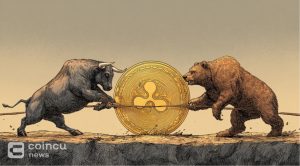Tokenomics, a blend of “token” and “economics,” is a catch-all term for the characteristics that provide a certain cryptocurrency value and appeal to investors. This covers everything from a token’s quantity and issuance method to factors like its utility.

A project that has thoughtful and well-designed incentives to buy and hold tokens for the long haul is more likely to outlive and perform better than a project that hasn’t created an ecosystem around its token, so tokenomics is a crucial concept to take into account when making an investment decision. A solid base frequently leads to greater demand over time as more investors pour money into the enterprise, which raises pricing.
Similar to this, in order for a project to succeed and attract investment, its founding members and developers must carefully evaluate the tokenomics of its native coin.
Key characteristics of tokenomics

The incentives that attract investors to purchase and keep a particular coin or token depend on the way a cryptocurrency’s economy is set up. Each cryptocurrency has a unique monetary policy, similar to how different fiat currencies are from one another.
The incentives that define how a token will be distributed and the usefulness of the tokens that affect their demand are both determined by tokenomics in a crypto economy. Price is greatly influenced by supply and demand, and projects with the appropriate incentives may see a significant increase in value.
The primary parameters that developers alter to influence tokenomics are listed below:
- Mining and staking – For base layer blockchains, like Ethereum 1.0 and Bitcoin, mining is the core incentive for a decentralized network of computers to validate transactions. Here, new tokens are given to those who devote their computing power to discovering new blocks, filling them with data and adding them to the blockchain. Staking rewards those who fulfil a similar role but by locking away a number of coins in a smart contract instead – this is how blockchains like Tezos operate, and it’s the model that Ethereum’s moving toward with its 2.0 upgrade.
- Yields – Decentralized finance platforms offer high yields to incentivize people to buy and stake tokens. Tokens are staked in liquidity pools – huge pools of cryptocurrencies that power things like decentralized exchanges and lending platforms. These yields are paid out in the form of new tokens.
- Token burns – Some blockchains or protocols “burn/” tokens – permanently remove them from circulation – to reduce the supply of coins in circulation. According to the laws of supply and demand, reducing a token’s supply should help to support its price as the remaining tokens in circulation become more scarce. In August 2021, Ethereum started to burn a portion of tokens sent as transaction fees instead of sending them to miners.
- Limited vs unlimited supplies – Tokenomics determines a token’s maximum supply. Bitcoin’s tokenomics, for instance, dictates that no more than 21 million coins can ever be mined, with the last coin expected to enter circulation around the year 2140. Ethereum, by contrast, has no maximum limit, although its issuance each year is capped. NFT (non-fungible token) projects take scarcity to the extreme; some collections might mint only a single NFT for a piece of art.
- Token allocations and vesting periods – Some crypto projects account for a detailed distribution of tokens. Often, a certain number of tokens are reserved for venture capitalists or developers, but the catch is that they can sell those tokens only after a certain time. That naturally has an effect on the circulating supply of the coin over time. Ideally, a project’s team will have implemented a system where tokens are distributed in such a way that it reduces the impact to the circulating supply and a token’s price as much as possible.
Who decides?

The majority of tokenomics are built into a specific cryptocurrency’s computer code by its original creators, and all of these decisions are made at the protocol level.
A accompanying white paper, which is an in-depth document that describes what the proposed cryptocurrency will do as well as how it and any underlying technology would work, is sometimes used to outline a cryptocurrency’s tokenomics prior to its release.
Consider the Terra ecosystem’s tokenomics, which were detailed in a white paper published in 2019. The project advertises itself as a network of stablecoins, which are digital tokens that use either a reserve of assets or a sophisticated algorithm to maintain a stable value.
One of the key stablecoins in Terra’s ecosystem is called TerraUSD (UST). To maintain UST’s price as near to $1 as feasible at all times, UST is exchanged for LUNA through a complex network of arbitrageurs. Investors are drawn to this complicated tokenomics system because it makes it simple to engage in arbitrage trading and generate low-risk rewards. Additionally, the UST stablecoin can be utilized on a variety of trading platforms to lock in gains made in U.S. dollars amid choppy market circumstances.
DISCLAIMER: The Information on this website is provided as general market commentary and does not constitute investment advice. We encourage you to do your own research before investing.
Join CoinCu Telegram to keep track of news: https://t.me/coincunews
Follow CoinCu Youtube Channel | Follow CoinCu Facebook page
Annie
CoinCu News






















